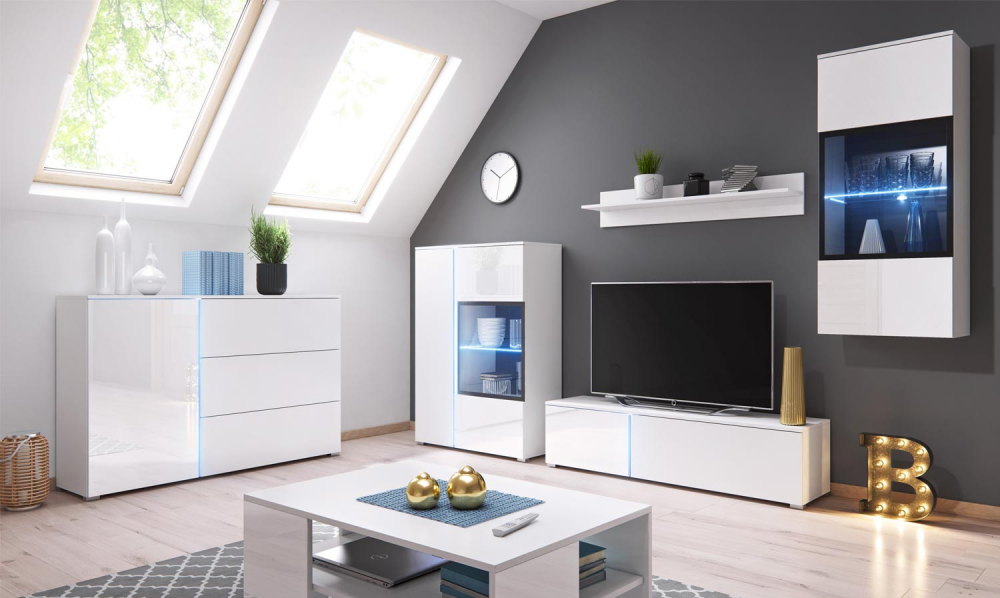INSPIRATIONS

Minimalist Interiors in a Nutshell
Seasonal fashions come and go, but minimalism, understood both as a style and an approach to interior design remains popular.
Why is that? Because minimalism works. Simply. Minimalism is, in fact, synonymous with simplicity, and its ultimate point is the organisation of space, which - precisely - minimises clutter and chaos, both physical and psychological. In this way, you will create an interior where you will have time (and space) to do what you like doing without having to constantly tidy up.
Practical minimalism
Start with one room. First, get rid of all that is unnecessary.
How? Examine all objects, and for each item, answer the following questions:
1. Is this thing useful? Not ''generally'', but for you. Good rule says that if, for any reason, you have not used something for a year (2 years when it comes to specialist equipment, e.g. sports gear, which requires financial expenditure or time, e.g. skiing), it means that the object is not useful.
YES?Find a place for this item.
NO?Go to Question 2.
2. Does the item have a sentimental or investment value?
NO?Assess the condition of the item and, depending on the condition, discard, recycle, give away or sell.
YES?Go to Question 3.
3. Do you like this thing (for the aesthetics or memories it evokes)?
NO?Put away in a keepsakes box (or a safe if it is something very valuable)
YES?Go to Question 4.
4. Do you have a place where it will look beautiful?
YES?Display on a shelf, wall or in a cabinet.
NO?Put into storage.
This process is not a one-off: it should be repeated every year, and preferably twice a year.
Things that are damaged, broken or no longer needed should be repaired, discarded or given away/sold as soon as possible. Life surrounded by clutter is more difficult, more chaotic, stressful and depressing.
Storing items "just in case" will turn your home (and certainly an attic or garage) into a junk store full of "it-might-come-in-usefuls", of which few will see the light of the day ever again.
As you can see, storage, "out of sight" is the very foundation of minimalism. In a well-organized interior, every thing has its place where it "lives" - preferably near the area where it is used. Such organization will be facilitated by modular wardrobes and cabinets, boxes, containers and multifunctional furniture combining, for example, the role of a seat and container.
Aesthetic minimalism
Minimalism as a kind of aesthetics draws inspiration from Far Eastern interiors (especially Japanese) and the functional aesthetics of modernism.
Spare, modern lines and the impression of spaciousness promote peace and psychological relaxation, while the uncluttered interiors allow you to display individual, carefully selected furniture or works of art in all their beauty.
The main principles of aesthetics of minimalism are:
Spacious rooms, bearing in mind that spacious does not necessarily mean large. It's more about the impression of space. Minimalism is perfect for small rooms. In such cases it is even more important that the space available is not "clogged up" with furniture, trinkets and other objects.
Simple, natural forms. Clean lines - minimalism used to mean sharp geometric shapes, but in recent years the minimalist trend has also embraced slightly softer, more fluid forms.
A small number of carefully selected, functional and beautiful pieces of furniture. To start with, remove everything not essential from the design, try such layout and, if necessary, add other (necessary) items.
Clear surfaces: floors, countertops, tables. Nothing should be kept 'in view'. Stacks (even neat) of books on the floor, jackets hanging on the door ... all this must disappear, either hidden in closets, or given away / sold / discarded.
Minimal ornamentation: a minimalistic interior will suit a large artwork or a poster, one striking pot plant or a vase for flowers. There is no place for numerous trinkets, postcards, knickknacks, groups of souvenirs or arrangements consisting of a dozen or so photographs in fancy frames ...
Simple window coverings -- curtains in solid colors, Venetian or roller blinds. If you must have curtains, invest in a subtle geometric pattern or plain tulle.
Neutral colours -- white, light, natural shades of gray or off-white are the minimalism classics, but muted earth tones, blues or greens also work. Uniform blocks of vivid hues will add life as a colour accent.A similar role can be played by the previously mentioned picture or poster.
Avoid patterns and prints. Minimalist interior is not a place for Persian rugs or curtains in a floral pattern.
